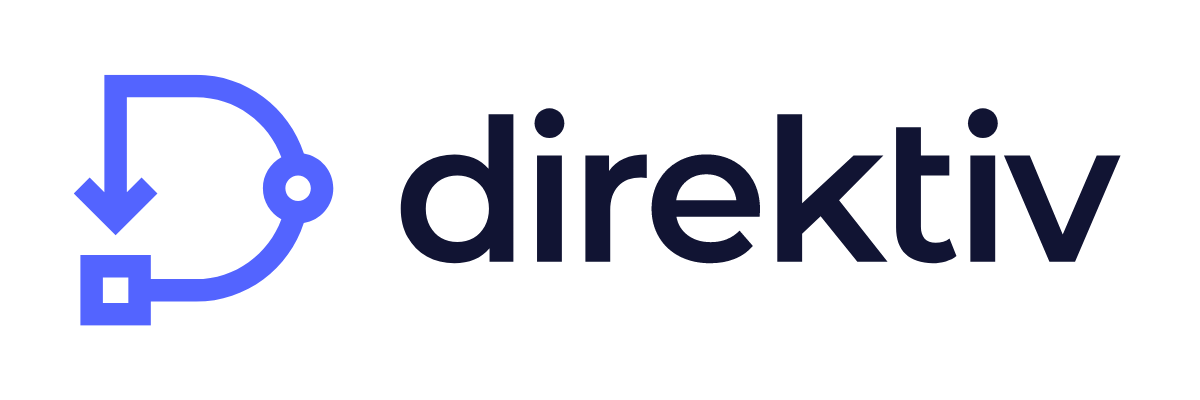Terraform & Ansible Automation: How One Direktiv Customer Achieved Effort Estimation Savings of 1.3 FTEs [Case Study]

Having your cloud orchestration tool at odds with your configuration management solution can be…problematic. 🙄 But you shouldn’t have to give either of them up just because they aren’t syncing the way they could. The potential is there, and that’s why you keep the hope alive, maybe making a few complaints (or snarky comments 😬) here and there.
One of our recent customers was running into wasted resources and the inability to recycle and repurpose what had already been created—and it was beginning to add up. Their automation solution, Red Hat Ansible, had the possibility of bringing 667% ROI over 5 years, so they were determined to make it work with their cloud infrastructure platform—Terraform.
So, how did they use Direktiv to consolidate and overcome these IT headaches?
Let’s find out.👇
Terraform and Ansible: At Odds
As a business's IT environment expands and grows, it brings forth new challenges with each unique piece of technology introduced. But growing as a company is a necessary evolution for a healthy bottom line. The process doesn’t just stop because the IT department needs time to acclimate to new systems and procedures. The train must keep on rollin’. 🚂
With each new IT operation and infrastructure automation introduced, the entire IT environment becomes more complicated, making what used to be a simple task, multiple steps long in a single process chain.
When this company first started, their single automation platform requirement was sufficient. But as the tech environment began to change and grow, it would mold into a much larger multi-platform solution.
For their automation solutions, they were using the Red Hat Ansible Automation Platform. According to PeerSpot, “Red Hat Ansible Automation Platform is the #1 ranked solution in top Network Automation tools, #2 ranked solution in top Release Automation tools, and #2 ranked solution in top Configuration Management tools.”
So yeah…it’s pretty good. 🤩
For deployment, they were using Hashicorp Terraform. PeerSpot also claims, “Users give HashiCorp Terraform an average rating of 8.6 out of 10. HashiCorp Terraform is popular among the large enterprise segment, accounting for 65% of users researching this solution on PeerSpot.”
Could they have taken a different direction? Sure. But they really wanted to make these two great platforms work together to fit their needs.
While best efforts were made to maintain the playbooks from Ansible and the scripts from Terraform, both platforms required continuous monitoring to ensure there were no kinks in the chain. Regularly scheduled maintenance and upgrades were routine elements while operating this way. Again, not an awesome situation to be in, but they were doing their best to make it work.
This demanding maintenance schedule, combined with the regional and international deployments was a lot to handle. The environment would quickly have more than 5 teams across the entire business supporting the platforms. 🤯
As you can imagine, this wasn’t a viable option for long-term ROI, no matter which way you looked at it. These massively wasted resources impacted the automation teams and carried significant cost implications—just to support both platforms. This also halted them from the ability to expand beyond their IT infrastructure and automation.
The process, while working to some degree, was losing valuable time and money left and right. It was not only stagnant, but was beginning to backslide. What needed to happen to relieve this pressure, would be to somehow consolidate Terraform and Ansible—not throw them away and start over.
If combined and in sync, the process could deliver the same outcome with less wasted resources and time, and possibly even some other added benefits they weren’t aware of…yet.
So they began the search.
Terraform and Ansible: In Sync
They started in pursuit of a new tool that would hopefully solve their bleeding resource issues. And it didn’t take long. 😃
They soon discovered Direktiv and quickly learned how it could reshape their entire process. They realized it could serve as a container orchestration engine without the need to re-engineer, re-skill, or dream up an entirely new process.
Surprisingly, this seemed to check all of their boxes. ✅
Now with Direktiv behind the wheel, the Ansible and Terraform environments could be “spun-up” on-demand as provisioning or infrastructure automation as required—meaning the resources are only put to use when they are needed.
Direktiv also ensures that the most up-to-date, accurate information available is being used for each task. The engine “clones” it generates are the latest version of the customer playbooks for Ansible, and the latest scripts from the GitLab repository for Terraform.
These playbooks and scripts are then executed against the latest version of Ansible and Terraform, keeping the entire process upgraded and accurate without the need to manually check the status before each new task. Again, major resource saver here. 🔥
Once the process is completed, the data is then destroyed, and no action is required on their part. Along with this, advanced application testing and customer container integrations are added to the orchestrated workflows as needed.
So, did this new integration mean more 💰💰 for their bottom line?
And the Outcome?
Now armed with Direktiv’s orchestration engine managing the technical workflows between Ansible and Terraform, they would soon find out if the new system would hold up for the long run.
Spoiler alert from the title of this article, it did. 💪🏻
This change to Direktiv integration made it possible to completely flip the state and direction they were headed in.
They saved an estimated 1.3 FTEs from the regular maintenance of the combined environments between Ansible and Terraform alone. They had recognized the possibility was there, but to see it in real-time was completely different.
They also saved about 45 minutes per deployment with the ability to reuse previously created IT infrastructure automation scripts and playbooks, whereas before they had to start from scratch each time.
So at 45 minutes per deployment…
How much time would that be saving you by using Direktiv?
Let’s see…carry the one… 😵💫
I think I’ll just let you finish the math on your own and you can get back to us.
Final Thoughts
The truth is, if you are running one-step automation and it’s working well, you probably don’t need this integration…yet. But if your environment is growing more and more complex and you find yourself bleeding resources left and right, then Direktiv’s solutions might be a great fit for you and your company. 😃
To read more about how Direktiv solved these problems and delivered these results, you can get more info from the case study.
If you want to learn more about digital transformation, check out this blog to read all about the industry trends you should be aware of.

.png)

